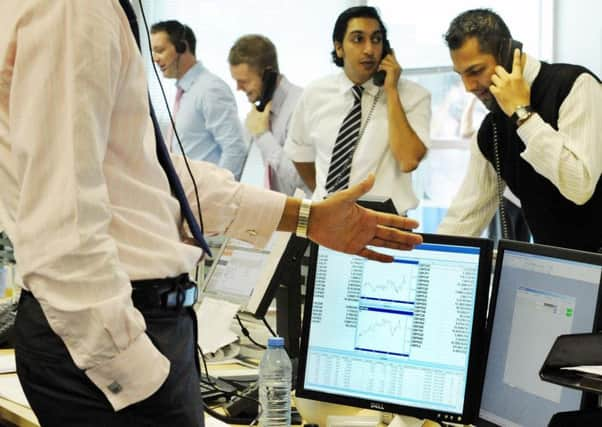How machine learning is transforming the stock exchange


But the reality is different. Around three-quarters of exchanges on the NYSE and Nasdaq are now carried out by algorithms - computer programs designed to follow a particular set of rules - and not human traders.
The last stock exchange in Scotland closed in 1973. As recently as half a century ago, there were four operating north of the Border.
Advertisement
Hide AdAdvertisement
Hide AdNow any Scot looking to dabble in the markets only requires a laptop or smartphone and some capital ready to invest. Any number of online services - from Nutmeg to Moneyfarm - can help you build a broad portfolio without the need to speak to anyone on the phone.
Machine learning, which broadly refers to how algorithms are steadily improving, underpins such “robo-advisor” services.
“It’s really about learning from data,” said David Richardson, director of partnerships at the University of Edinburgh’s Bayes Centre, which specialises in data science and artificial intelligence (AI).
“With lots of data you can build models which allow you to spot patterns. There is a lot of work going on in how you can predict future stock prices. It is a highly competitive space.
“Has anyone mastered it? There are a lot of algorithms. They may win for a period of time but there comes a point when they decline in performance.
“But all the big banks are now using machine learning in a range of other fintech areas, such as credit risk and building customer models.
“The trend is companies want more and more data sets. They want to understand how they can build competitive advantage from that data.
“I speak to a lot of companies working in the machine learning sector and it is a hot area right now, with a lot going on in finance.”
Advertisement
Hide AdAdvertisement
Hide AdOne advantage of the technological revolution for individual investors is a reduction in costs.
In 2014, wealth management firm Charles Schwab launched Intelligent Portfolios. It was among the first services in which an algoritim, rather than a person, decided where to invest your money.
“As opposed to working with a traditional advisor where you might pay up to one per cent, here you get portfolio management at essentially no management fee,” Tobin McDaniel, who leads the Schwab Intelligent Portfolios team, told the BBC.
A further bridge was crossed in 2016 when the hedge fund Aidyia started trading on the stock market using an artificially intelligent algorithm.
But not everyone is convinced the days of the human trader are numbered. Joshua Gans, professor of strategic management at the University of Toronto, has claimed the very real advantages of prediction machines will be lost if they are not used to complement human skills such as judgement.
“Put simply, AI works well when the trading objective is obvious. But when it is complex and hard to describe, there is no substitute for human judgment,” he wrote in a recent column for Market Watch.
“If all traders are just replaced by prediction machines, you eventually end up with an automated stock market and automated investment returns.
The new AI tools aren’t proprietary. Moreover, the trading data they feed on is readily available, though sometimes at a price. Once everyone has prediction machines, no one has an advantage.”
